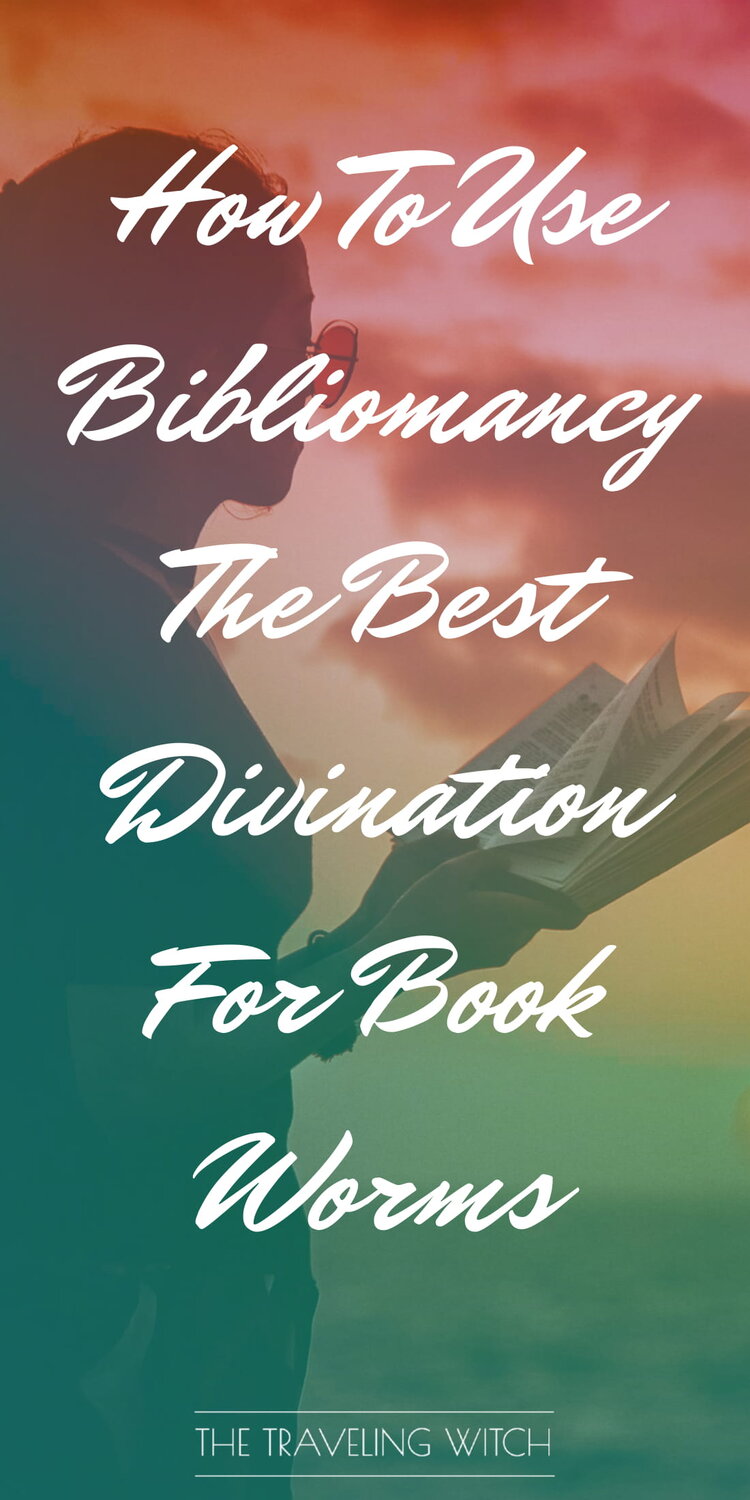Divination is a huge part of witchcraft, but it can seem really complicated and unapproachable to new witches. It’s not hard to see why! The most common form of divination is tarot and to utilize a tarot deck effectively you have to be familiar with and be able to interpret 72 separate cards, and that’s not even getting into tarot spreads and how the cards interact with each other in combination. It’s a lot to learn!

For this reason, I see a lot of newer witches avoiding divination entirely because they think it’s just too complicated for them or they think that their memory isn’t good enough. This is such a shame! There is so much more to the world of divination than just tarot reading. Witches use everything from playing cards, to runes, to signs in the weather, to the stars to divine the future. Just because tarot might not be for you doesn’t mean that divination is beyond your reach.
Rather than writing off divination wholesale, you need to find a form of divination that really works for you. We’re all individuals with distinct needs, preferences, and talents, and our choice of divination should reflect that. Today, we’re going to talk about one of the easiest and most versatile forms of divination that we have: Bibliomancy.
What Is Bibliomancy?
Bibliomancy is divination performed with books. If you’re anything like me (i.e. a giant bookworm) you’ve probably got all the tools you could possibly need for bibliomancy lying around your house already. Traditionally, bibliomancy was performed using the Bible, but for our purposes, you can use any book that you want. Bibliomancy is simply allowing your intuition to guide you to a sentence, passage, or even a full chapter from a book that will answer whatever question you have posed.
Now, don’t get me wrong, just because bibliomancy is easy and doesn’t take any fancy tools doesn’t mean that it’s entirely straightforward. The first hiccup that you might run into is that this form of divination relies entirely on your intuition. If you are uncomfortable with or out of touch with your intuition, you might struggle to get answers with bibliomancy. On the other hand, using something like bibliomancy can actually help to strengthen your connection with and awareness of your intuition over time, so if you feel like you don’t have a very strong intuition, you don’t need to avoid bibliomancy wholesale. It’ll just take time and careful attention to learn how your intuition speaks to you.
The second potential issue that many new bibliomancers run into is that interpretation is highly subjective. There are no standard meanings, there’s no guidebook, no common symbolism that you can draw on. It’s just you and the book, trying to interpret whatever passage you found in the context of the question you asked. In some cases, this can be very straightforward! Sometimes, if your intuition is really on point, a book will spit out a fully formed answer that takes almost no interpretation to understand. Other times, you might end up with passages that feel pretty obtuse when put into the context of your query. This is okay! As with anything in the craft, learning this skill takes time and as you become more familiar with this form of divination, you will develop personal methods of interpretation that work best for you.
How To Use Bibliomancy
So then, how do we start to use bibliomancy? At its simplest, the bibliomancer poses a question either aloud or in their mind and then chooses a book and lets it fall open to any page. The answer to the question is somewhere on that page, usually wherever the eye initially lands. Let’s take a closer look at the two primary methods of bibliomancy step-by-step.
1. The Single Book Method
This first method is the more traditional of the two. As I said earlier, historically the Bible was used as the book of preference. Any bibliomancer would simply pick up the Bible and use that as the automatic choice for divination. With the single book method, the bibliomancer has chosen a single book to use for divination long term.
You certainly do not have to choose the Bible if you want to use the single book method. You can use literally any book that calls to you! You might consider using any book that you find particularly spiritually relevant to you, a book by someone you admire, a novel that speaks very deeply to you, or any other book that feels appropriate for your purposes. While I tend to use the bookshelf method that we will discuss next, I do have one or two books that I gravitate to over and over again.
To perform bibliomancy with the single book method, take the book that you have chosen and place it in front of you on the table. You can place your hand on top of the book if physical contact helps you. Focus on your question or the situation that you would like to illuminate. Maintain your focus until you feel ready to open the book, or like the book is pulling you to open it. Flip through the pages of the book. You can do this once or several times depending on how you feel. When it feels correct, stop flipping and open to the page that you have stopped on. Allow your eyes to fall anywhere on the page.
Take note of the first sentence that you see. You may find that this single sentence answers your question or you may feel called to read the entire paragraph, passage, or chapter. Follow whatever feels right. Read the passage you’ve chosen a few times and let the words sink in. Is the message here obvious or is it more obscure? Are there any words or phrases that jump out at you? What images or memories does this passage pull up in your mind? If it doesn’t make sense immediately, that’s okay. Sometimes divination is not terribly clear in its answers, but over time we will often gain clarity around the answers that we have been given.
2. The Bookshelf Method
The second method utilizes a full bookshelf, though you could also theoretically use an entire library or bookstore if you can follow your intuition around a room in that way. To perform this kind of bibliomancy, stand in front of your bookshelf and pose your question either aloud or in your mind. Let yourself be drawn to any book or written material on the bookshelf. This could be a novel, it could be a nonfiction book, it could be a textbook, hell you could even be drawn to a comic book. Follow your intuition! Whatever book you are drawn to, pull it off the shelf and begin flipping through the pages.
As before, stop when it feels correct to do so. Let your intuition tell you when to stop and open to that page. Let your eye fall anywhere on the page that it wants to and take note of the sentence that it lands on. Again, your answer could be a single sentence, a paragraph, a passage, or a full chapter. Let yourself feel how much of the book to take in. You might even find at times that a single word jumps out at you as your answer. There is no right or wrong here!
With this method, you choose a new book every time you pose a new question. If you’re asking several questions back to back, put the first book back on the shelf and start over again from the beginning. You may be drawn to that book again or you may be drawn to a new book entirely. If you find yourself going to the same book time after time, you may want to take note of that and consider switching to the single book method to cut out a step.
Interpretation
Now for the tricky part, interpreting the answers that you get during divination. Over time, you will develop personal preferences and methods of interpreting your answers, but in the beginning, it can be rather difficult. There will be times when the answer comes to you immediately and you know exactly what it means and have no problems with interpretation. For all the times where it’s not so easy, use the following process to help you dig into your bibliomancy passages.
1. Copy out the full passage that you’ve chosen.
Start by defining the beginning and end of the passage that pertains to your answer. Whether you’ve chosen a sentence, a paragraph, a section, or a full chapter. If you don’t want to write out an entire chapter, I completely understand. Simply re-read the entire passage very carefully one time through and then continue with the next few steps. Unless the passage that you’ve chosen is quite long though, I suggest writing it out. The act of writing or typing the words out yourself can help to begin breaking down the meaning and illuminating a bit more of the answer that’s hiding in there for you. It also gives you a copy of the passage that you can take notes on and mark up without worry.
2. Look for any words, phrases, or sentences that stand out.
Reread the passage again, this time highlighting or underlining any words, phrases, or sentences that stand out to you. This time you’re just going through and intuitively allowing your brain to point out the important bits. Don’t overthink this too much, try to let your intuition guide you and just go with the flow. What feels important to you? What words seem to jump off the page at you? What is your eye being drawn to as you read the passage? Mark these or copy them off onto a separate sheet of paper if you’re still working out of the original book.
3. What motifs, themes, colors, archetypes, or emotions do you see in the passage?
On your next read-through, keep an eye out for any motifs, themes, colors, archetypes, or emotions that make an appearance in the passage that you’ve chosen. Depending on the length of your passage, you could have a lot of these elements packed in there or almost nothing from this category. Take notes on what you find and then begin to consider associations and correspondences that these things might have. For example, if the passage that you’re reading has butterflies in it, what do butterflies symbolize to you? If the color red is mentioned several times in the passage, what does the color red symbolize to you? If the character who’s speaking in the passage is an archetypal knight, what does that archetype mean to you? This is where we really start drawing on your personal experience and meaning. Feel free to look up symbolism and common meanings, but don’t be afraid to rely on your own impressions of these symbols and motifs.
Write down all the associations you have with the elements you’ve identified and make a note of any associations or meanings that seem to repeat throughout many of the elements that you’re analyzing.
4. Allow the information to marinate in your mind.
Finally, if your interpretation of the material still feels hazy, it’s okay to just put it down for a while. The subconscious mind is very good at creating connections and drawing meaning from the world around us, and sometimes we just need to get the conscious mind out of the way so that it can do that. If you’ve taken the time to focus on your passage and identify important sections and elements and the symbolism they could hold and it still doesn’t make sense, just put it down. Put your notes aside and don’t worry about it for at least the next day. You want to sleep between now and when you next come back and try to interpret the answer you’ve been given. Our brains do a crazy amount of work digesting information and creating new connections and understanding from what we’ve taken in during the day while we sleep. Take advantage of this process! All you have to do is remind yourself of the bibliomancy reading immediately before bed, you can also reread your notes before going to sleep if that helps but don’t spend a lot of conscious brainpower trying to work through it. Just bring it up in your mind before going to sleep and then trust that your subconscious mind will work on it while you rest. The next morning, or perhaps sometime later in the day, come back to the passage that you’re working on interpreting with fresh eyes and see what’s there.
You’re The Diviner, You Make The Rules
The last thing that I want to remind you of is that witchcraft is all about taking back the reigns of your spiritual development. This blog post should be a starting point for you to begin your journey into bibliomancy, not the last word on the matter. Get creative with your divination. If you want to do bibliomancy with digital news articles, do it! If you want to use a ten-volume encyclopedia for bibliomancy, go for it! If you want to use two books at once, why not give it a try? One of the best parts about this form of divination is that it can be so personal and unique to the practitioner. You’re the diviner, you’re the witch, you make the rules in your spiritual practice. Trust in your own power and inner knowledge as you explore this new form of divination!
New to witchcraft?
Sign up for my FREE Witchcraft class!




Love this piece! I have been practicing bibliomancy for nearly two years now, since I had a spiritual awakening at 31 years old when I was about 6 months postpartum. I only however came across the term bibliomancy a few days ago when reading Jed McKenna’s second book Spiritually Incorrect Enlightenment. Its so validating to be able to put a name to my intuitive gift as well as have a key to unlock messages from fellow witches who understand this craft! To know I have been practicing divination also gives me confidence to continue learning more about tarot and oracle. Again thank you for this article and providing the universe with such beautifully written direction to enhance and share our intuitive gifts! Love and light ***